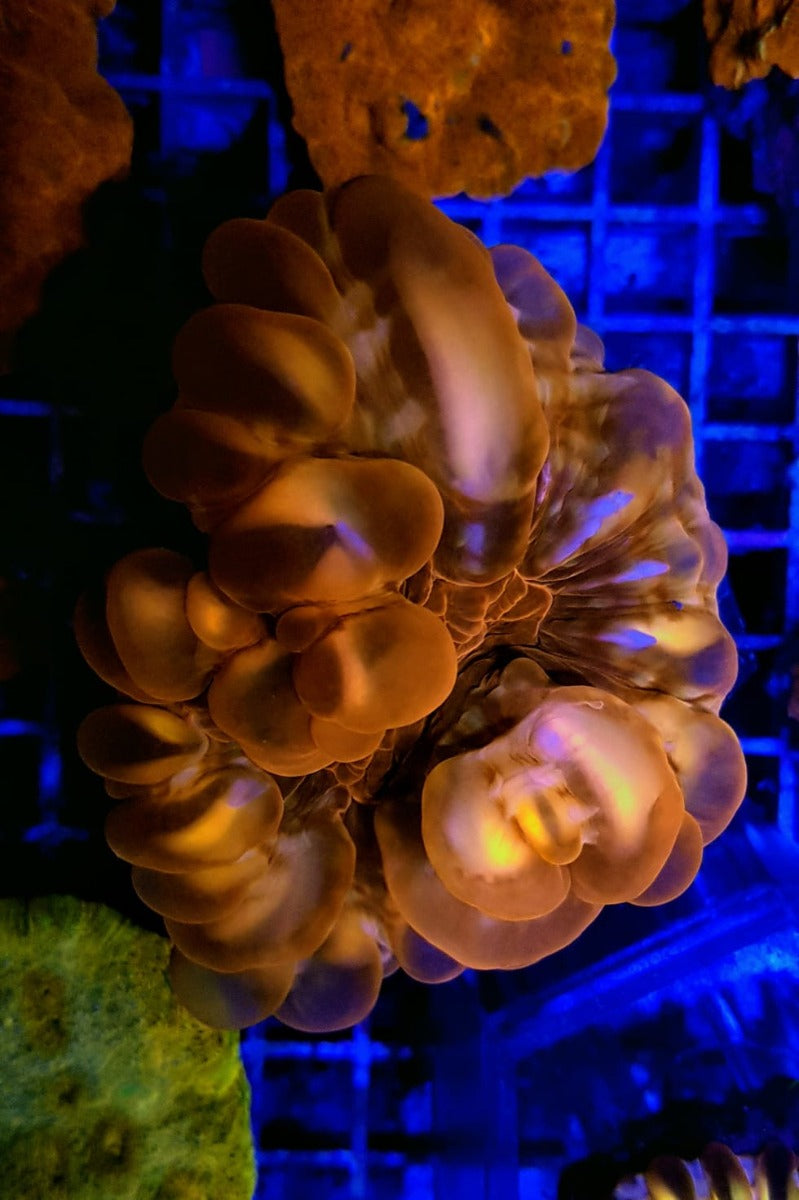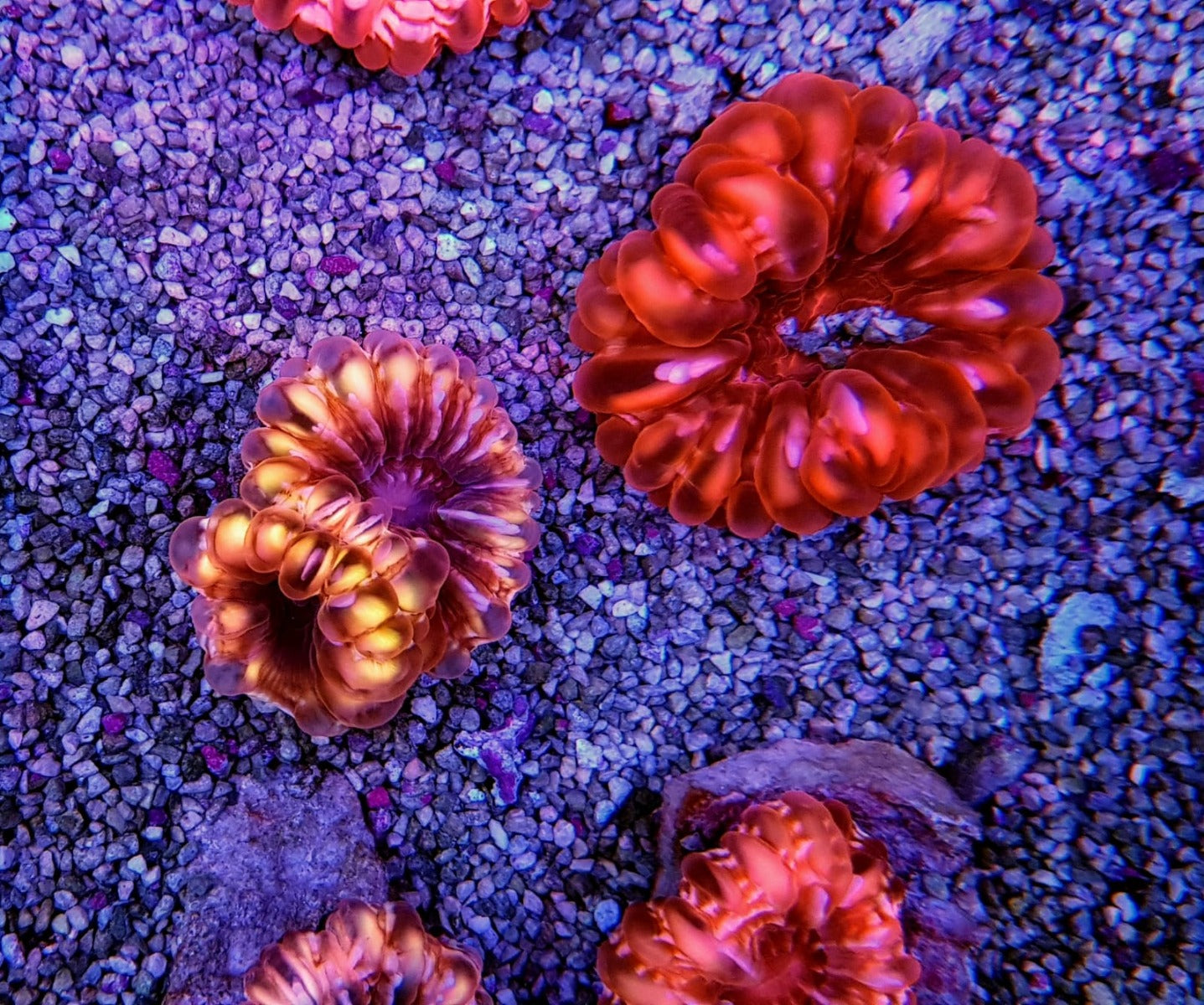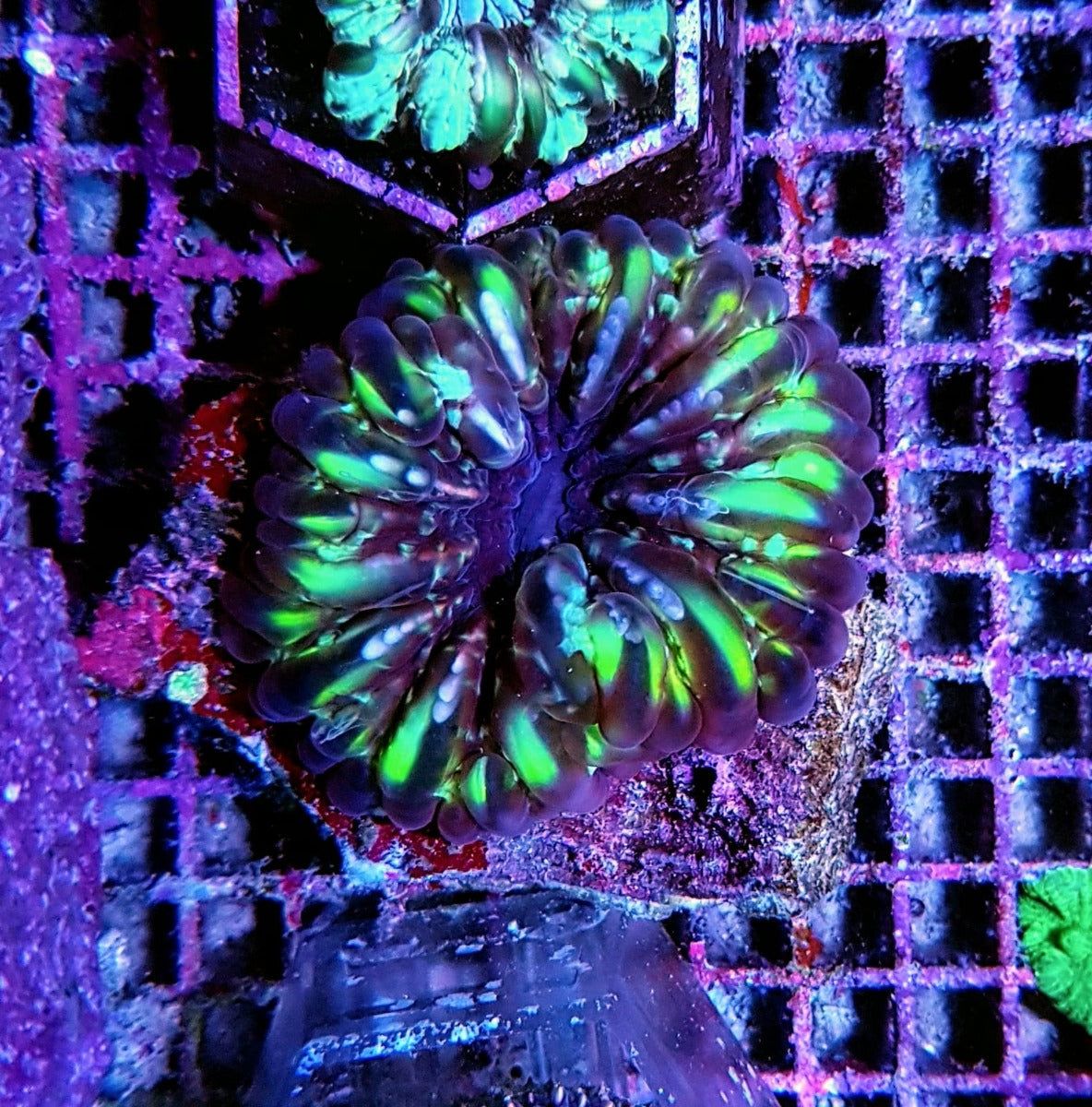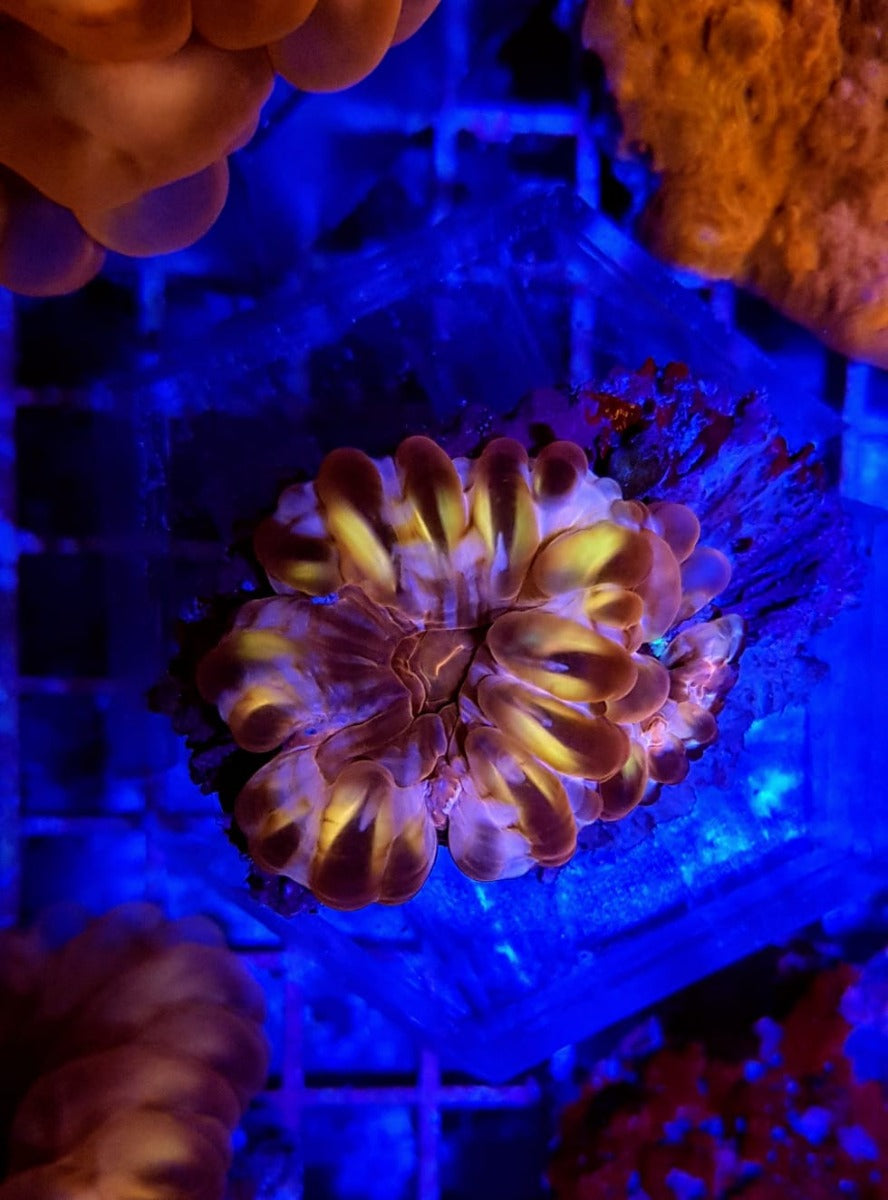Coralreef Store
Cynarina spp. (Premium)
Cynarina spp. (Premium)
Couldn't load pickup availability
- Indo-Pacific
- Moderate to High Care Level
- For Experienced Hobbyists
- Moderate Placement in Reef Tank
Cynarina spp., also known as the Open Brain Coral, is a remarkable species of stony coral native to the Indo-Pacific region. This solitary coral species features a large, fleshy, and disc-shaped body that comes in vibrant hues such as red, green, purple, and orange, often with contrasting color patterns. Known for its unique, circular appearance, Cynarina spp. extends its polyps to capture food particles and engage in photosynthesis through its symbiotic relationship with zooxanthellae algae.
Due to its sensitivity to water quality and environmental factors, Cynarina spp. is best suited for experienced hobbyists who can provide stable and specific conditions for its health.
Placement in the Tank
Cynarina spp. prefers moderate to low lighting conditions, with an intensity between 100-200 PAR. It should be positioned in the lower to mid-range sections of the tank to avoid direct light, which may cause stress and bleaching. This coral thrives in areas with gentle to moderate water flow. Excessive water movement can cause its polyps to retract or even become damaged, while stagnant flow can hinder feeding.
Water Parameters
Maintaining stable and precise water parameters is essential for Cynarina spp.:
- Temperature: 24°C to 28°C (75°F to 82°F). A stable 26°C (79°F) is ideal.
- Salinity: 1.023–1.025 specific gravity (SG), with 1.024 being optimal.
- pH: 8.0 to 8.4, with an ideal pH of 8.2.
- Alkalinity (dKH): 8-12 dKH, with 9-10 dKH being optimal for growth.
- Calcium: 400-450 ppm for strong skeletal development.
- Magnesium: 1250-1350 ppm.
- Nitrate: Less than 5 ppm, as high levels can negatively affect coral health.
- Phosphate: Below 0.03 ppm to prevent algae growth.
Feeding
While Cynarina spp. benefits from its symbiotic relationship with zooxanthellae for photosynthesis, it is also a filter feeder that requires supplemental feeding. In tanks with limited plankton, provide finely chopped meaty foods such as mysis shrimp or brine shrimp, or use liquid coral foods. Feeding once or twice a week is generally sufficient. Avoid overfeeding to maintain water quality.
Maintenance and Care
Proper maintenance of Cynarina spp. includes regular water quality monitoring and tank upkeep:
- Water Changes: Perform 10-15% weekly water changes to maintain stable conditions and remove harmful substances.
- Water Parameter Monitoring: Regularly check parameters like temperature, pH, calcium, and alkalinity to ensure they are within optimal ranges.
- Pruning: Cynarina spp. does not require frequent pruning but should be given ample space to grow. Avoid overcrowding to prevent competition for resources.
- Pest Control: Be on the lookout for pests such as flatworms, aiptasia, or nudibranchs that can harm the coral. If any pests are detected, take immediate action to remove them.
Compatibility
Cynarina spp. is a peaceful coral, but it can be territorial, especially when placed too close to other corals. It is best to keep it away from aggressive species like SPS corals with long, stinging tentacles that can damage it. Cynarina spp. does well with other soft corals or non-aggressive LPS species, as long as there is enough space for it to grow.
Conclusion
Cynarina spp. is a visually striking and captivating coral that can become the centerpiece of a reef tank. With the proper care, stable water conditions, and regular attention, it can thrive and continue to add vibrant color to the aquarium. Its moderate to high care requirements make it suitable for experienced hobbyists who can provide the consistent environment it needs to flourish.
Share










